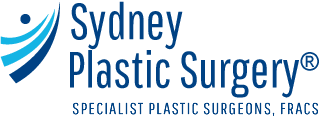Tattoo Removal
Surgical excision, Dermabrasion, Laser removal
Options for tattoo removal include surgical excision, dermabrasion, and laser.
Surgical excision is best performed for a small tattoo on loose skin; however, it always leaves a scar.
Call us on free phone 1300 002 006 if you are outside Sydney or 9561 0222 if you’re in the Sydney area
Dermabrasion involves sanding the skin with a rotating wire brush and may leave a scar or a pale area. There is a chance that even after several treatments, the tattoo may still be noticeable. The results seen by dermabrasion depend on how deeply into the skin layers the tattoo ink was injected. The deeper the injection, the less likely that dermabrasion will have good results.
Laser removal has become the treatment of choice. Laser Tattoo Removal targets tattoo ink and rapidly heats it. Heat causes ink to expand and break up into smaller particles, which the body more easily absorbs.
Each treatment will likely cause mild discomfort, comparable to a small rubber band snapping against the skin. Most patients can tolerate the mild discomfort when it is within a small area. When a larger area, like an entire arm or back, is being treated, the discomfort may interfere with the procedure.
Discomfort can be minimised by the use of ice, sedatives, pain medications, or injections of local anaesthetic. If this is an area of concern for you, talk with your surgeon about ways to minimise the discomfort.
Multiple Treatments Are Necessary
Each laser targets a different family of colours. To eliminate a family of colours, two to four sessions may be needed. Since most tattoos have multiple colour families, several lasers may be required. For example, if three-colour families exist in one tattoo, and each family of colours must be targeted three times, a total of nine laser sessions will be necessary. Various tattoos require 2 to 20 laser treatments for complete removal. Many other factors determine the number of treatments necessary.
Tattoos achieved in a tattoo parlour are challenging to remove because professional tattoos are typically deep, dark, and made with complex ink. Homemade tattoos are variable in their difficulty of removal based on the type of ink used and the depth at which they were placed. New tattoos are difficult to remove because they have a higher ink concentration than old ones. Older tattoos have a lower ink concentration because as the tattoo ages, the body absorbs some of the ink.
Turquoise tattoos are particularly challenging to remove because no laser effectively targets that colour. Red, white, and flesh-coloured tattoos are also troublesome, as they may turn black after laser treatment.
The total number of treatments required cannot be established with certainty at the outset. The expected range is between 3 and 12. Treatments may be performed every one to two months or spread out over several years.
The tattoo will start to fade one week after each treatment and will resume to fade for several months. Some prefer to save money by discontinuing treatments before the tattoo is entirely removed. Others pursue laser therapy until there are no detectable signs of the tattoo.
Some individuals choose to over-tattoo (cover-art) to hide an undesirable tattoo.
Ask Your Plastic Surgeon About These Potential Complications
Scarring, Bleaching or fading of the skin, discolouration, incomplete removal
What are the risks associated with this procedure?
Plastic surgery, like any surgical procedure, carries inherent risks and potential complications.
Please read our Risks and Complications of Plastic Surgery page.
